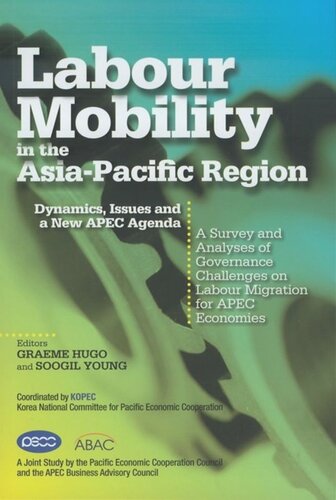

Most ebook files are in PDF format, so you can easily read them using various software such as Foxit Reader or directly on the Google Chrome browser.
Some ebook files are released by publishers in other formats such as .awz, .mobi, .epub, .fb2, etc. You may need to install specific software to read these formats on mobile/PC, such as Calibre.
Please read the tutorial at this link: https://ebookbell.com/faq
We offer FREE conversion to the popular formats you request; however, this may take some time. Therefore, right after payment, please email us, and we will try to provide the service as quickly as possible.
For some exceptional file formats or broken links (if any), please refrain from opening any disputes. Instead, email us first, and we will try to assist within a maximum of 6 hours.
EbookBell Team

4.4
42 reviewsDriven by demographic changes, and reinforced by intensifying globalization, international labour mobility has been on the rise in recent decades in the Asia-Pacific region. It seems that, after trade and investment, labour mobility constitutes the final frontier for regional integration among the Asia-Pacific economies. There is no doubt that labour movements are integral to regional economic integration and critical to the long-term health of the regional economies and business operations. In reality, however, such movements are much burdened with political and social problems in the labour origin economies as well as the labour destination economies, and yet many of these problems remain not just unaddressed by the relevant governments but not even well studied. The present volume seeks to fill this gap by offering synthesis papers stemming from the studies on international labour migration in twenty Asia-Pacific economies which were discussed at a joint PECC-ABAC conference held in Seoul, Korea, on 25-26 March 2008, organized by KOPEC. These papers examine the demographic transition, the associated pattern of international labour migration, the national policies associated with it as well as their implications for business and the issues they raise, and, finally, the implications of these analyses for cooperation among the APEC governments, for each of the four subregions in the Asia-Pacific, as well as for the whole region.